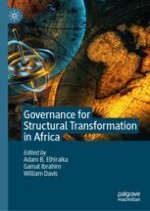2019 | OriginalPaper | Chapter
8. Food and Agriculture Global Value Chains: New Evidence from Sub-Saharan Africa
Authors : Jean Balié, Davide Del Prete, Emiliano Magrini, Pierluigi Montalbano, Silvia Nenci
Published in: Governance for Structural Transformation in Africa
Publisher: Springer International Publishing
Activate our intelligent search to find suitable subject content or patents.
Select sections of text to find matching patents with Artificial Intelligence. powered by
Select sections of text to find additional relevant content using AI-assisted search. powered by
